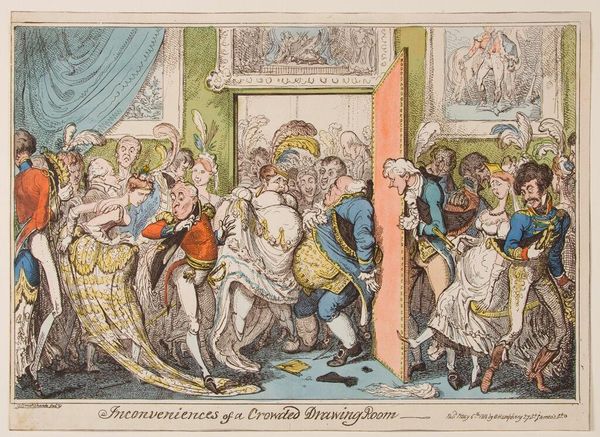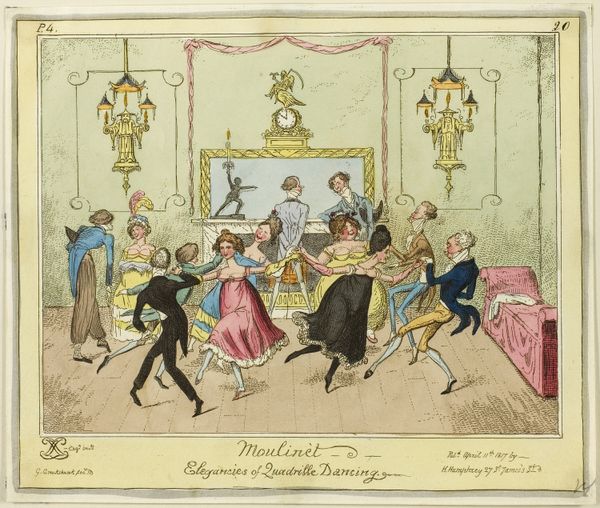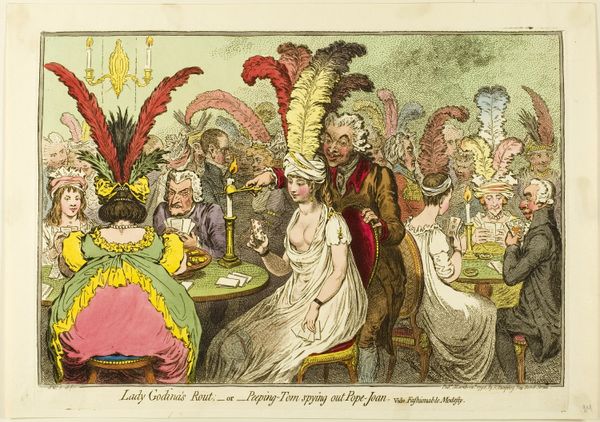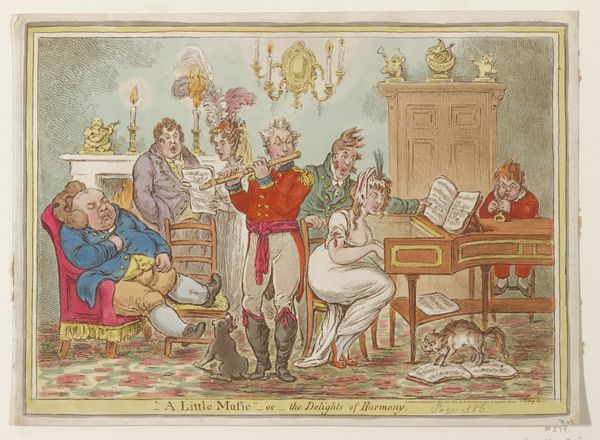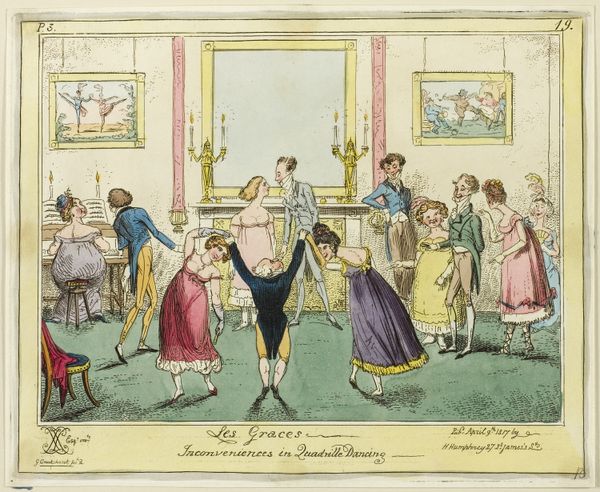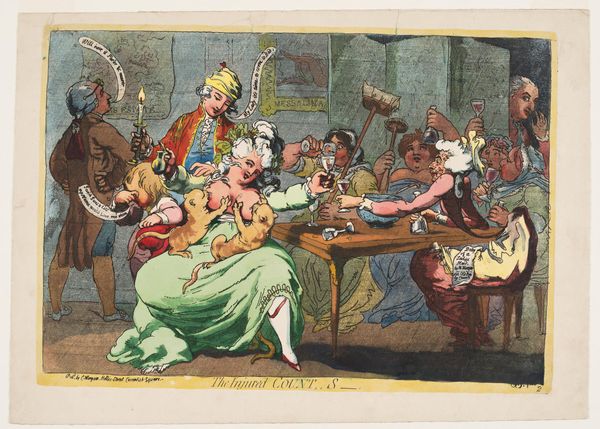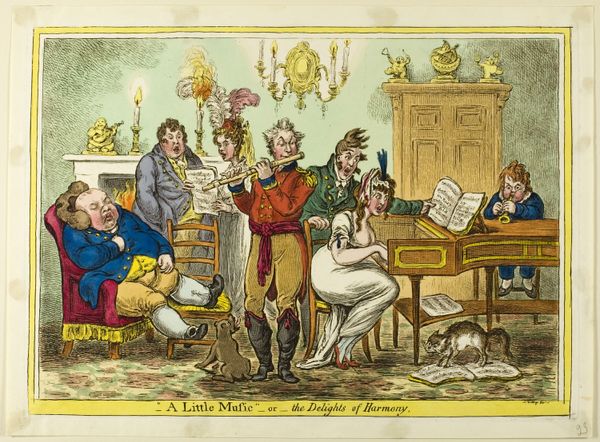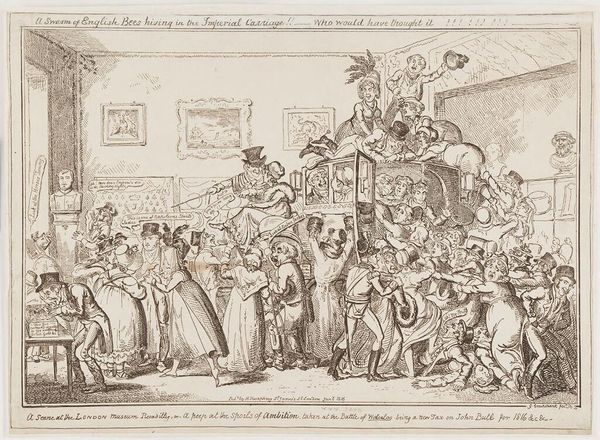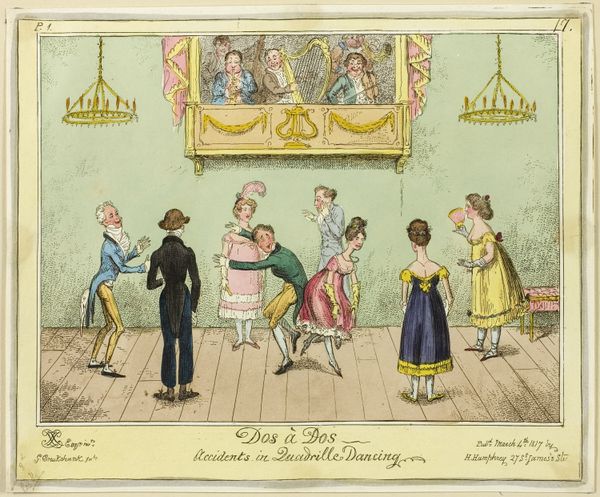
drawing, print, etching, paper
#
drawing
# print
#
etching
#
caricature
#
paper
#
romanticism
#
genre-painting
Dimensions: 180 × 545 mm (image); 202 × 553 mm (sheet, cut within plate)
Copyright: Public Domain
Editor: Here we have George Cruikshank's etching, "La Belle Assemblée," possibly from 1817, currently held at the Art Institute of Chicago. My first thought is that the piece is teeming with social commentary. What do you make of it? Curator: It's fascinating how Cruikshank captures the social dynamics of dance. Notice how above the dancers, there are pictures. What do you think those are portraits *of*? And the caricatures within – what stories do you think they tell, echoing across the centuries? Editor: They almost feel like "stages" of dancing development, from childhood games to something much more formal. But the people *in* the main scene… their exaggerated expressions are intriguing. Curator: Indeed. The exaggeration is key. These are symbols, are they not? Cruikshank's work carries forward older forms like Commedia dell'Arte, holding up archetypes of youth, beauty, manners…or lack thereof! Consider also the context of Regency England – social anxieties played out in satire. The clothing they are wearing must have triggered immediate recognition and perhaps a critical opinion among the artwork's contemporary viewers. Editor: So, it’s less about literal depiction and more about symbolic representation of societal anxieties. That's interesting. Curator: Precisely! This assembly is, as the subtitle states, full of "characteristic dancing," a pantomime revealing aspirations and pretenses through recognizable gestures. This work immortalizes social dynamics and anxieties in a uniquely memorable, visually potent form. What does it tell *us* about that culture? Editor: I never thought about it as being a symbolic commentary on the aspirations and tensions present during the Regency era. Now I can appreciate the layers beyond the surface. Curator: Symbols connect us to cultural memory and the flow of history; to decode those messages is a powerful tool!
Comments
No comments
Be the first to comment and join the conversation on the ultimate creative platform.
